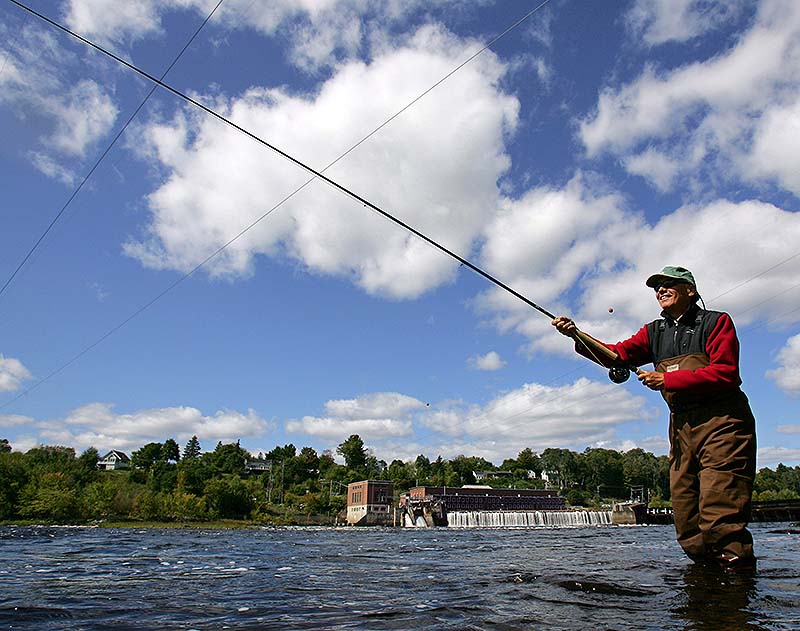Work crews on Monday will begin taking down the Veazie Dam, the lowest barrier on the Penobscot River and the second dam to be removed as part of a river restoration effort that has gained international attention.
When the project is completed in two years, sea-run fish — such as salmon, sturgeon, alewives and shad — will have significantly improved access to about 1,000 miles of upstream habitat.
By next year’s spring migration, fish will swim unimpeded from the Atlantic Ocean to the Milford Dam, where they will be lifted over the dam by a state-of-the-art fish elevator now under construction. By 2015, after a fish passage around the Howland Dam is completed, fish will have access to prime habitat in the Piscataquis, Mattawamkeag, and Pleasant rivers and the East Branch of the Penobscot River.
“I think it’s going to generate a lot of excitement when people start seeing these fish that belong in the system,” said Laura Rose Day, executive director of the Penobscot River Restoration Trust, the group behind the effort.
In terms of the number of species that would benefit and the amount of habitat that would be gained, it is the largest river restoration project involving dam removal in U.S. history.
The river has been dammed at Veazie since a dam was first erected in 1833 to power a sawmill. The 32-foot-high Veazie Dam was built 100 years ago to generate electricity.
A temporary dam called a cofferdam has been built behind the Veazie Dam, allowing work crews easier access to the Veazie Dam as they tear it down.
Work crews on Monday will breach the dam for the first time. The breach will be wide enough by this fall for fish to pass over the dam, and the entire dam is expected to be removed by the end of the year.
The Great Works Dam at Old Town was removed last year.
At 10 a.m. Monday in Eddington, there will be a Penobscot Nation drumming and sacred ceremony, followed by remarks from several speakers, including John Bullard, regional administrator of the National Oceanic and Atmospheric Administration, Chief Kirk Francis of the Penobscot Indian Nation, 2nd District U.S. Rep. Mike Michaud and Patrick Keliher, commissioner of the Maine Department of Marine Resources.
It will cost $6.8 million to remove the Veazie Dam. The project is funded by the federal government and private contributions. The Wyss Foundation, which funds conservation projects in the American West, has contributed $2 million.
The entire $60 million project is seen as a model for river restoration efforts around the world because it was made possible by cooperative agreement among environmental groups, federal agencies, an Indian tribe and a power company.
The agreement improves fish passage while allowing a power company, Black Bear Hydro, to increase power generation at six dams in the river basin, so there will be no loss of total power production.
Tom Bell can be contacted at 791-6369 or at
tbell@pressherald.com
Send questions/comments to the editors.



Comments are no longer available on this story